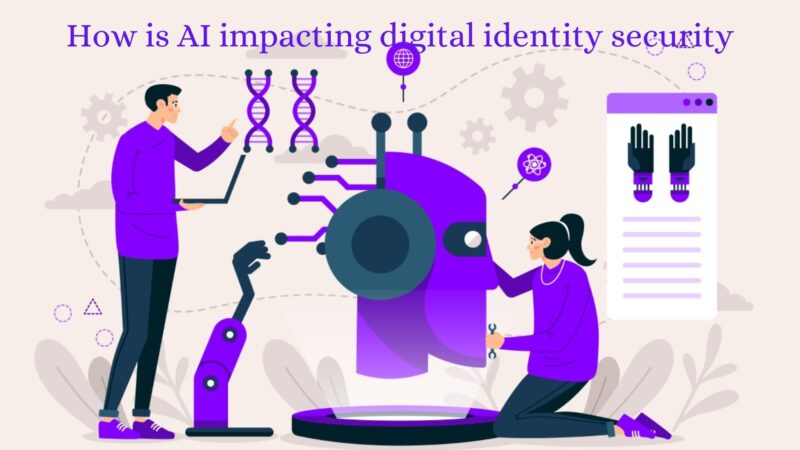How to choose the best software development process for your business?

Are you having trouble deciding which software development process is best for your project?
As the renowned management guru, Peter Drucker, once said, “The best way to predict the future is to create it.” Indeed, choosing the right blueprint for your software venture is akin to setting the course for success or potential setbacks.
How, then, can you make sure that your software development process completely synchronizes with your corporate business and project specifications? Is it a customized framework that expands your business aims strategically and makes achievement easier? Have you thought about how your process choice can help or hurt your goals, whether they be quick product iterations, tight adherence to budgets, or smooth customer collaboration?
Keep in mind that there is no one strategy that works for all software development projects as we say one size doesn’t fit all. Each project has its own scope, level of complexity, and timetable, making it as distinct as your fingerprint. Finding and hiring a dedicated software development team that effortlessly adjusts to your unique needs is the key. We’ll explore the several approaches in this blog as we lead you through this confusing environment. Our ultimate goal is to provide you with the information you need to make a decision that not only moves your company toward its objectives but also secures success by following Peter Drucker’s advice.
Understanding Your Business Needs
The first step in making sure your software projects are successful is to comprehend your business needs and match them with your software development methodology. This step is extremely important because it serves as the cornerstone for your complete development process. It specifies the goals and parameters of your project, ensuring that your time, money, and resources are invested in tasks that directly advance the development and competitiveness of your business.
Your software development process may be a potent tool for effectively attaining your business goals when it is tightly linked with them. The development technique you choose should support and complement your goals, whether they are to create solutions to gain a competitive edge or to streamline internal processes to increase cost effectiveness.
Understanding your unique business requirements and matching the software development process to your goals will increase the likelihood that the project will succeed and guarantee that your organization will gain concrete and strategic advantages from your software expenditures. We’ll examine various software development processes and how they might be customized to match your particular business needs in the sections that follow.
Types of Software Development Processes
Software development techniques are organized methods that direct the organization, management, and execution of software projects. Choosing the best methodology for your project requires a thorough understanding of the numerous options. Here is a quick rundown of some well-liked methodologies:
- Agile: Agile methodologies—such as Scrum and Kanban—place a strong emphasis on adaptability, teamwork, and incremental development. They work well for tasks where needs could change or are not totally clear at first.
- Waterfall: A waterfall strategy is one that involves finishing each process (such as requirements, design, development, and testing) before moving on to the next. It works well for projects with clear, consistent needs and few expected modifications.
- DevOps: DevOps is a cultural and technical strategy that enables development and operations teams to work together more effectively. In order to guarantee a quick and dependable software delivery process, it places a strong emphasis on automation, continuous integration, and continuous delivery (CI/CD).
- Scrum: Scrum is an Agile framework that encourages collaboration, responsibility, and incremental advancement. It is suited for projects that ask for frequent updates and feedback since it divides work into time-boxed sprints.
- Kanban: Another Agile strategy, Kanban depicts work as a flow on a board. It is helpful for projects where work items need to be managed well and fluctuate in size and importance.
Assessing Project Requirements
It’s essential to evaluate the particular requirements of your project before choosing a development methodology:
- Set the project’s scope, taking into account its features, functionalities, and integrations. Waterfall is preferable for stable scopes, while Agile is ideal for dynamic scopes.
- Consider project deadlines and timetables. While Waterfall may take longer owing to its sequential nature, Agile and DevOps can swiftly produce incremental results.
- Consider your financial limitations. Waterfall may demand a more fixed budget, whereas Agile may adjust to shifting budgetary constraints.
- Analyze the complexity of the project. While simpler projects may work well with Waterfall, bigger projects with changing needs benefit from Agile’s iterative approach.
You can choose the development methodology that will best suit your project by carefully evaluating its needs and comprehending the fundamental traits of the various development techniques.
Consider Your Team’s Expertise
A critical component of choosing the best methodology for your software project is evaluating the knowledge and experience of your team with various development techniques. The effectiveness and success of the selected procedure can be considerably impacted by a well-trained team.
- First and foremost, choosing the best methodology depends greatly on the team’s current skill set. Your team may perform well in an Agile environment if they have prior expertise with iterative development, collaboration, and self-organization. On the other hand, a team that has a lot of experience with traditional Waterfall methodologies could find it challenging to adjust to Agile’s quick-paced, adaptable nature.
- Second, a certain methodology may be adopted more quickly and smoothly if you are already familiar with it. A team that has experience with a certain process is familiar with its tenets, procedures, and best practices. This comfort level lowers the learning curve, enabling your team to get started right away, and ultimately speeds up project development.
The likelihood of a project’s successful implementation and completion is increased when the talents and experience of your team are matched with the methodology for software development that has been selected. Having a framework, they are familiar with and comfortable working inside helps the team be more effective and motivated.
Risk Tolerance and Flexibility
Risk tolerance and adaptability are key factors to take into account when selecting a development process in software development.
The ability and willingness of your business to manage risks and changes during the project is referred to as risk tolerance. Agile techniques, like Scrum, are made to be risk-tolerant and can adapt to changing requirements. They enable ongoing modifications based on feedback, minimizing the potential effects of unforeseen difficulties.
However, because they depend on a thorough initial plan, techniques like Waterfall have a lower risk tolerance. Addressing deviations from this strategy may be expensive and time-consuming. They are therefore better suited to projects with consistent and well-defined requirements.
Risk tolerance and flexibility are closely related concepts. Agile approaches help teams to adapt to changing conditions because they are naturally adaptable. With a focus on automation and continuous integration, DevOps also offers flexibility by facilitating quick adjustments. Due to its greater rigidity, waterfall has less inherent flexibility and may demand a lot of work to handle changes.
Budget and Resource Constraints
Budget and resource limitations may have a big impact on the development process you choose.
Agile techniques frequently allow for resource allocation flexibility, enabling you to change team size and priorities as necessary. This adaptability might assist you in maintaining budgetary constraints while maximizing resource utilization.
With its upfront planning and set deadlines, waterfall projects could need a more rigid resource allocation. Changes can be expensive and may interfere with the initial spending plan.
By automating routine processes, DevOps can improve resource use and ease resource restrictions. However, putting DevOps ideas into practice might necessitate making initial expenditures in automation technologies and training.
When choosing a methodology, take into account your organization’s financial ability and resource availability. While Waterfall may demand more rigid adherence to initial resource plans, Agile and DevOps are often more flexible to budget and resource restrictions. A successful software development project within your restrictions can be ensured by making a well-informed decision based on these factors.
A Popular Example
Example: XYZ Corporation – Implementing Agile
Global IT giant XYZ Corporation used the Agile development process to produce a new mobile app with great success. The requirement for quick adaptation in the fiercely competitive mobile app market led to the decision to adopt Agile.
Stats:
Time: Six months for the project
Released features: 4 significant updates
95 percent of customer input was used
98% of bugs were fixed within 24 hours.
Insights: XYZ Corporation thoroughly analyzed the market dynamics and project needs. They understood how crucial it was to release new features fast in order to keep one step ahead of rivals. They were able to quickly create a minimum viable product (MVP) and get user input thanks to agile’s iterative methodology. They used this input to prioritize and add new features, creating an app that is incredibly user-centric as a result. A seamless development process was made possible by regular retrospectives and teamwork.
Choosing the Right Process
Take into account the following important factors while selecting the best software development process for your project:
- Evaluate the size, complexity, and anticipated changes of your project. Waterfall may be effective for requirements that are well-defined and stable, while Agile is appropriate for dynamic projects.
- Consider the knowledge and experience your software development team has with various techniques. Utilize their advantages and comfort to simplify the adoption process.
- Determine your organization’s comfort level in managing risks by looking at its tolerance for risk. While Waterfall is less adaptable, Agile can handle shifting requirements.
- Analyze your financial limitations and the resources that are available. When it comes to resource allocation, Agile and DevOps are more flexible than Waterfall, which could necessitate a more rigid budget.
- Take into account the necessary level of client and stakeholder involvement. While Waterfall adopts a more organized, client-involved approach, Agile promotes regular client collaboration.
- Determine the project’s objectives, scope, timetable, and budget.
- Identify the team’s skills, knowledge of methodologies, and strong and weak points.
- Establish the flexibility and risk tolerance of your organization.
- Consider your resources and financial limitations.
- Recognize the necessary amount of client and stakeholder involvement.
- Choose the best methodology for your project based on its qualities.
- As the project develops, be ready to adjust.
Conclusion
The success of your project depends critically on the software development process you use. Efficiency, flexibility, and ultimately stakeholder satisfaction is all directly impacted. You can start a project development path that increases your chances of success by carefully evaluating the special conditions of your project and matching them with the suitable approach. Keep in mind that flexibility is essential, and the method you choose should be customized to meet your unique demands. Spend some time assessing, changing, and succeeding in your software development initiatives.






